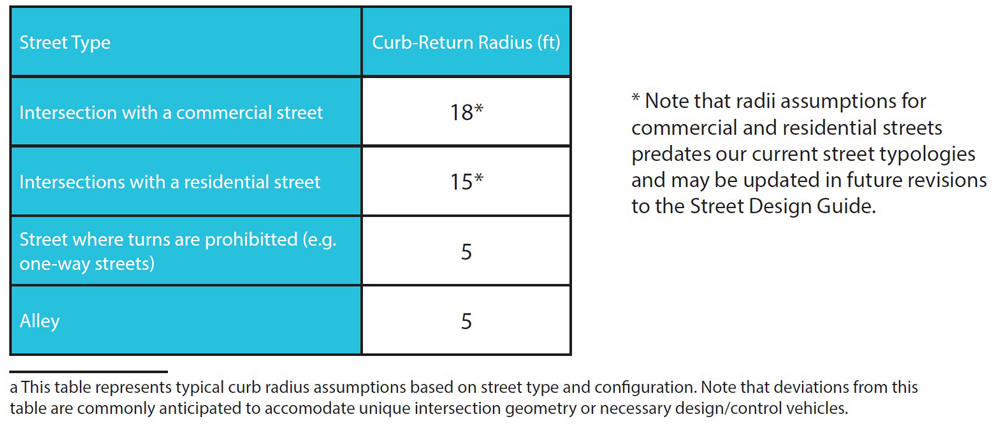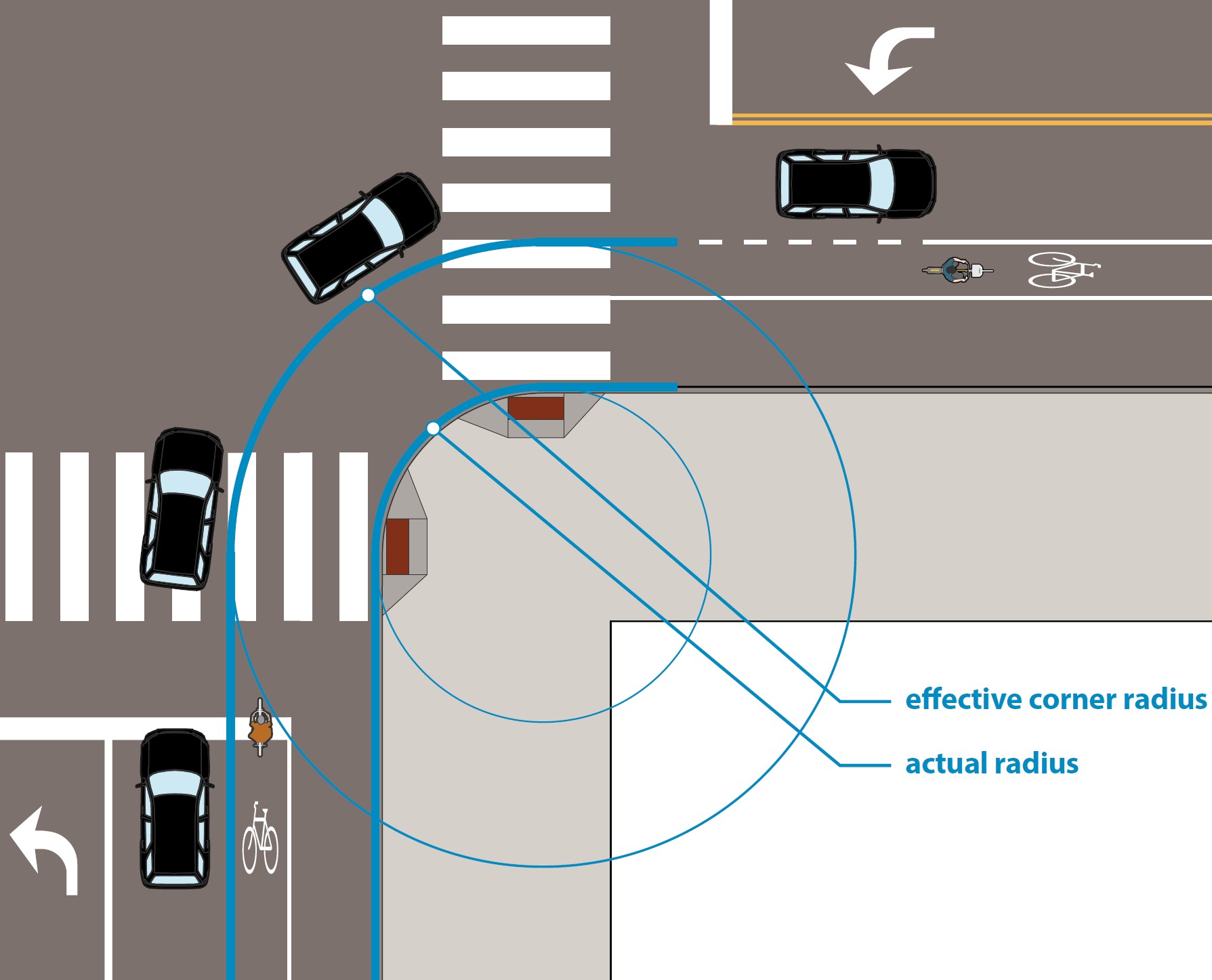3.7C Curb-return radii
Search Content
Download PDF
Print Guide
Introduction
The curb-return is the curved connection of curbs where two streets come together to form an intersection. The purpose of the curb-return is to guide vehicles in turning corners and to separate vehicular traffic from pedestrian areas at intersection corners. The curb-return radius refers to the curvature of the curb line when two streets come together.
Figure 3.7C.1:
Curb-return radii

Design Considerations
|
Use smallest practical radius |
The smallest practical curb-return radius should be used at all intersections to manage the speed of turning vehicles, shorten the length of pedestrian crosswalks, and provide adequate space at the corner for properly aligned curb ramps. It is important to choose a practical radius as selecting design and control vehicles smaller than appropriate can compromise the safety of people biking and walking, as large vehicles may be required to frequently mount the curb to complete a turn.
|
|
Use design and control vehicle guidance |
The design and control vehicles identified for an intersection inform the curb radii that should be used. |
|
Where turns are prohibited |
Where turning movements are prohibited, such as at one‐way streets, a 5’ corner radius should be used. |
|
Alleys |
A 5’ corner radius is typically used for alleys. |
|
Actual vs. effective radius |
The actual curb-return radius may differ from the effective radius when on-street parking, an on-street bike facility, or a striped shoulder is adjacent to the outside travel lane (see Figure 3.7C.2). AutoTurn movements should consider the effective radius and a tighter actual radius should be implemented whenever practical. |
|
Strategies to tighten radii |
To achieve the smallest practical curb-return radii, the following design strategies may be considered:
|




